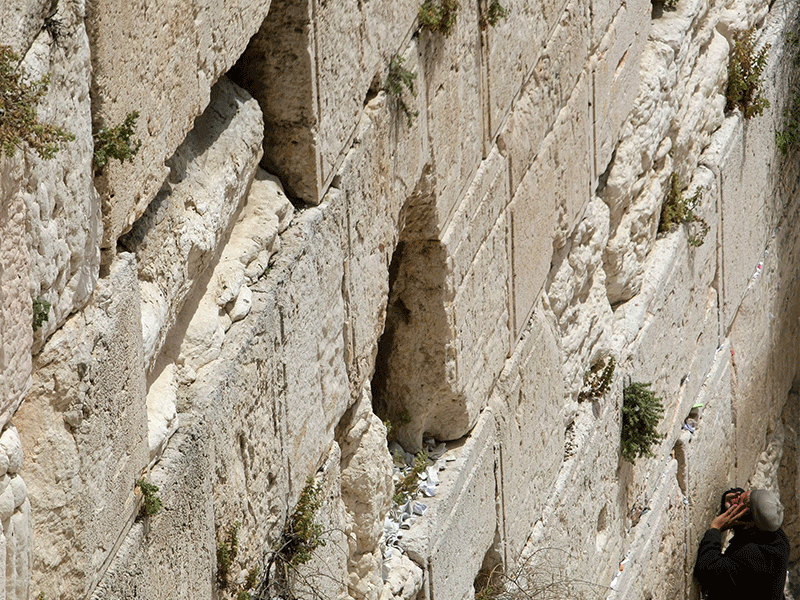How do you lose a church, find it, and then lose it again? In the Middle East, in Israel and the Palestinian Territories, archeology is complicated, religion is complicated, politics are complicated, life is complicated.
The story of the Nea Church is one that Moshe Safdie tells in his book, Jerusalem: The Future of the Past. An enormous ancient Christian church was built in Jerusalem in the 6th century. It was the biggest and most beautiful church in the land. Over the centuries its location right in the heart of the old city was forgotten. It was accidentally rediscovered in the Jewish quarter of Jerusalem in the 19th century and then forgotten about again. Safdie’s story about discovering it in the 1970s is a story of drama, history, frustration, mystery and complexity. It is a kind of parable of the land.
Since 2012, Rabbi Baruch Frydman-Kohl, Imam Ibrahim Mogra of the United Kingdom, the Faculty of St. George’s Anglican College in Jerusalem and I have participated in an annual study tour entitled The Path of Abraham/Sharing Perspectives. To date, over 130 people – Jewish, Christian and Muslim – from all over the world, though primarily Canadian, have journeyed with us.
The purpose of the study tour is to see for ourselves, together the complexity of three faiths and two nations trying to live together in one land. We deliberately seek out conflicting narratives and purposely put them in as much proximity as we can. We listen as we explore the intensity of the land. We build relationships locally and with each other, relationships that continue year after year.
We visit the Western Wall, the Church of the Holy Sepulchre and Temple Mount in succession. We listen deeply in visits to settlements and a Palestinian refugee camp.
We explore history, archeology and geography as people of three faiths. We have Shabbat dinner together, attend a Christian service in St. George’s Cathedral together and visit a mosque for prayer time together.
We experience complexity.
When we first created this study tour, we thought that we would divide the time and the sites to see into three blocks – Jewish, Christian and Muslim. We quickly learned that this was not easily possible because so many of the sites are shared by two or all three faiths – sometimes in ways that are very unifying for us all as the children of Abraham, and sometimes in ways that are very challenging. In Hebron, for example, the Christians have to choose whether to go into the Jewish or Muslim side of the Tomb of the Patriarchs and Matriarchs, even though the Patriarchs and Matriarchs are sacred to us all.
There are memories, vivid memories, of previous study tours that I carry with me always. Women in hijab profoundly moved by walking through Yad Vashem; Jews, Christians and Muslims shopping together in the Women’s Cooperative in Bethlehem that empowers and gives employment to local Palestinian women; and the Shabbat service at the Western Wall as the sun set, the singing and the prayers resounded, and the birds wheeled overhead.
And there have been, and will be, many moments of humour and grace in these journeys together. I met a Palestinian Christian woman who could not imagine how one could actually live in a country like Canada that had no lemon trees. She insisted that I take some of her lemons with me to make life in Canada more bearable. (My protests about Canadian customs rules were to no avail.)
You can register for the Sharing Perspectives study tour, Feb.17-25, 2020 on the St. George’s College, Jerusalem website or email [email protected].
